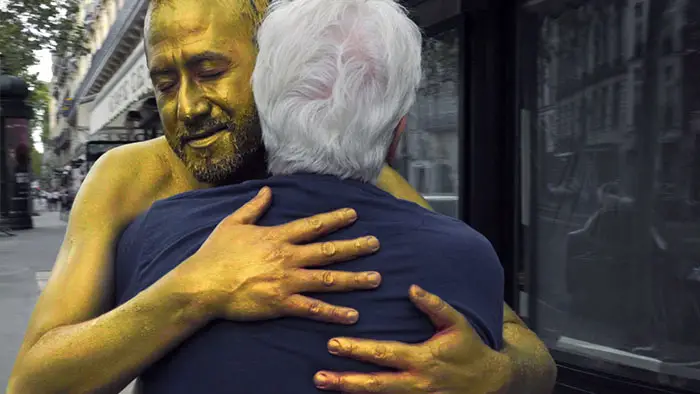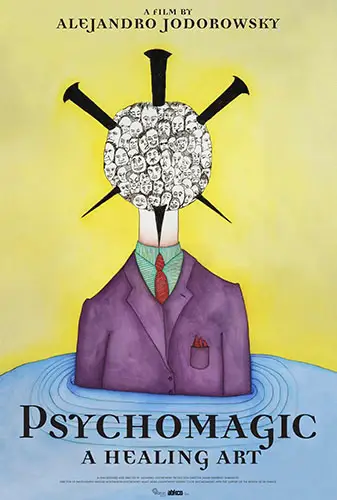
Not for nothing, I love Alejandro Jodorowsky. His work as a director has brought the world some of the strangest, most beautiful films, including the original midnight movie, El Topo. It doesn’t take long to realize that Jodorowsky does not necessarily fit into the “normal” category as a human being. Seeing one of his movies will tell you that in spades. Psychomagic: A Healing Art shows you that Jodorowsky has manifested that weirdness, that otherness into all facets of his life. Going so far as to invent a trauma therapy called Psychomagic.
Jodorowsky says that with his invention of Psychomagic, “I jumped out of my prison, as if out of an ivory tower, and entered the pain of the world.” He used tarot cards to “not read the future, but the present” and found generational pain everywhere. He argues that psychoanalysis only helps patients discover the why of their trauma but not how to get rid of it. Psychomagic is supposed to drive out trauma from the root.
The methods employed in Psychomagic are very…Jodorowskian, to say the least. Through a series of vignettes, we see how Psychomagic is used to treat different traumas. In one scene where a small boy is afraid of the dark, a mother paints him and herself black to become part of the darkness. In another, Jodorowsky breaks plates with a hammer on the chest of a man who has suicidal thoughts due to his abusive father. Jodorowsky then washes him in milk, and they attach a picture of his father to a balloon and float it out into the sky. It’s all very poetic and strange, which again is Jodorowsky’s wheelhouse.

“…introduced to foreign concepts that open your mind to new possibilities.”
Psychomagic: A Healing Art is a very niche film. It is going to freak some people out almost immediately. However, students of psychology and fans of Jodorowsky will find it endlessly fascinating, if not extremely uncomfortable. The film is essentially half Jodorowsky “Ted-talk” and half demonstrations of the Psychomagic methods. There is a lot of nudity because, again, we’re talking Jodorowsky. If one goes in with an open mind, the proceedings could be seen as a novel way of healing trauma. I could see a lot of people being too disturbed by the way that this methodology is completely out of the psychological left field. However, the “patients” that are presented in the documentary seem to leave the sessions dramatically changed for the better.
I found Psychomagic: A Healing Art eye-opening in a way that most Jodorowsky films are. You are introduced to foreign concepts that open your mind to new possibilities. It’s not as much of a celluloid acid-trip as his narrative work, but it comes close. Again, I would not wholeheartedly recommend this documentary to someone who has not seen Jodorowsky’s work prior to viewing, or someone who is particularly squeamish about nudity.
In a way, it sees the art of Jodorowsky’s films put to practical use, which is invaluable to a fan. I’m just afraid that anyone who doesn’t appreciate the director won’t necessarily enjoy this except for very specific reasons, which are being a student of philosophy or psychology, or possibly being someone who has suffered such a severe trauma that they might benefit from the practice. However, I could be misjudging the puritanical nature of most people, and more people could get more out of it. Just beware that this is not your average film by any means going in, which is why I enjoy it but might be why you hate it. Watch it and see which camp you fall into.

"…breaks plates with a hammer on the chest of a man who has suicidal thoughts due to his abusive father."



where may I see the movie?